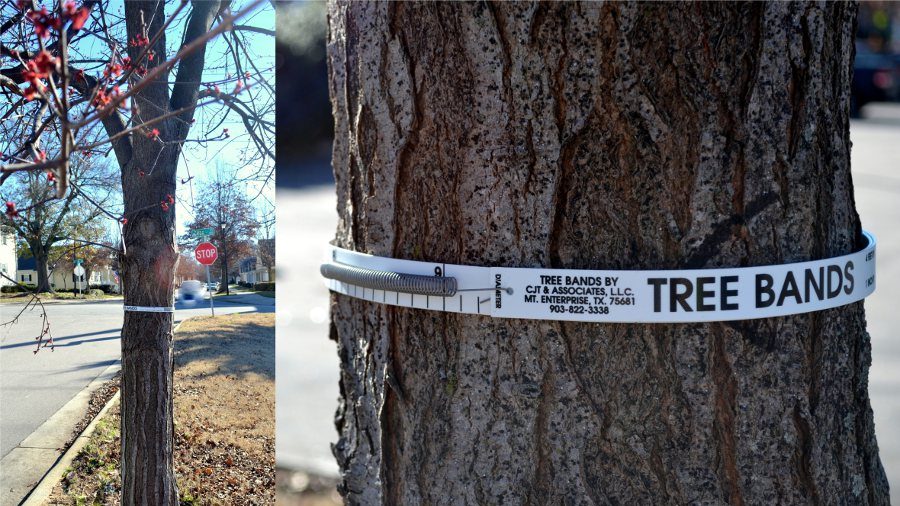New Citizen Science Project Gathers Information on the Future of Forests

The following post by Global Change Fellow alumnus Michael Just, now working as a postdoctoral scholar with SE CSC Faculty Affiliate Steve Frank, describes a new citizen science component of SE CSC project, Consequences of Urbanization and Climate on Human and Ecosystem Health.
Would you give a few minutes a year to reveal the future of forests?
What would be the easiest citizen science project ever? Watching paint dry? Falling off a log? Maybe. But what would you, or anyone else, learn from that?
We are starting a citizen science project almost as easy but much more important. Its called A Tree’s Life and all you need to do is monitor red maple growth in your yard. We even give you the supplies. It’s really just one supply called a dendrometer, and it does most of the work.
We want to measure trees because they have a very important job to do. Trees take carbon dioxide (a greenhouse gas) from the air and release oxygen. Even more important, though, is that they use the carbon to build more tree tissue. That’s how they grow, and as they grow, they store carbon that would otherwise remain in the atmosphere.
Trees provide many other services like filtering air and water, providing shade to reduce energy costs, and generally make life better. Unfortunately, warming from urbanization and from climate change can reduce tree growth due to water stress, pests, and other factors. In other cases warming might make trees grow more and become healthier due to a longer growing season.
The problem we want to address is that no one knows how trees in different habitats (urban, suburban, rural) and different latitudes will respond. So how can one predict the rate of carbon accumulation in the atmosphere, and thus climate change, if we don’t know how the primary terrestrial carbon sinks – trees – will respond? We can’t. Can we predict where urban trees and forests will thrive or decline? Not very well.
Our goal is to monitor the growth, and thus carbon sequestration, of hundreds or thousands of trees to help figure this out. If you have a red maple and a few minutes each year, please help us. You will contribute to our (all of humanity’s) understanding of how climate change and urbanization will affect forest health and carbon sequestration by trees.
View the USDA red maple distribution map for the U.S.